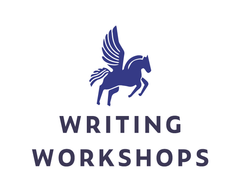by Writing Workshops Org Admin
6 years ago
If you're an avid reader, you know that feeling when you get to the end of a really good book – or worse, the end of your favorite series – and you want to read slower just to avoid having to acknowledge that you’re about to reach the last page. When you close the book, you know you'll be sad, no matter how it ends for the characters, because while you can presume they will go on with their fictional lives, you won’t get to share in any more of their adventures.
So what is it that gives fiction the ability to affect us like that? Why do readers write fan fiction, cosplay as their favorite characters, petition writers to return to a fictional world or keep a series going? In short, why do we get attached?
And, more importantly, as writers, how can we write the kind of fiction that will generate that kind of emotional response? It all comes back to character, of course. It’s been said that character is story. We don’t care about brilliant world-building or lush, gorgeous prose if these things aren’t affecting someone we have bonded with. And chances are, if we haven’t bonded with the protagonist of a story the first time we meet them on the page, we’re never going to get properly attached.
I know that sounds like a lot to ask for from a first meeting. But is it really?
Say you meet someone in real life at a cocktail party. They’re having a bad day, and they come across as mean and nosy (or a braggart, or disorganized and incompetent). How hard does that person have to work to overcome a negative first impression? Super hard, right? That’s because our brains are hard-wired to make judgments, and we’ve learned the hard way that wasting our time cultivating relationships with the wrong people will only leave us betrayed and disappointed (or at the very least, annoyed).
Let’s take as an example Emma Woodhouse from Jane Austen’s novel Emma. Imagine that this scene is our first view of Emma, which shows her calling Miss Bates, an awkward woman of a lower social class, a fool just to get a laugh from her friends (this is actually the low point Emma reaches, fallout from which makes her think she has lost her love interest). The entire group has gone on a picnic together, and they are trying to entertain themselves, but the conversation is lagging.
"It will not do," whispered Frank to Emma; "they are most of them affronted. I will attack them with more address. Ladies and gentlemen—I am ordered by Miss Woodhouse to say, that she waives her right of knowing exactly what you may all be thinking of, and only requires something very entertaining from each of you, in a general way. Here are seven of you, besides myself, (who, she is pleased to say, am very entertaining already,) and she only demands from each of you either one thing very clever, be it prose or verse, original or repeated—or two things moderately clever—or three things very dull indeed, and she engages to laugh heartily at them all."
"Oh! very well," exclaimed Miss Bates, "then I need not be uneasy. 'Three things very dull indeed.' That will just do for me, you know. I shall be sure to say three dull things as soon as ever I open my mouth, shan't I?—(looking round with the most good-humoured dependence on every body's assent)—Do not you all think I shall?"
Emma could not resist.
"Ah! ma'am, but there may be a difficulty. Pardon me—but you will be limited as to number—only three at once."
Miss Bates, deceived by the mock ceremony of her manner, did not immediately catch her meaning; but, when it burst on her, it could not anger, though a slight blush shewed that it could pain her.
As readers, we would see Emma as cold and callous, prone to mocking others. When we meet Knightly, the love interest, we would consider him a fool for thinking so highly of Emma and sincerely hope that he realizes his mistake before it is too late and he proposes. Everything we see Emma do after that would be colored by our assumptions about her self-centeredness, and we would be waiting for Knightly to see the truth, too. Which is not at all the story Austen wanted to tell. She wanted to talk about a good-hearted young woman who doesn’t realize the dangers of matchmaking, and can’t see the love right in front of her that can fulfill her own life. Our hypothetical Emma wouldn’t be nearly as memorable. Why? We wouldn’t trust our impressions of her. Even though technically it would be the same character, we wouldn’t be able to attach to her in the same way.
We can sometimes overcome a bad first impression in real life by building up a course of future actions that show who we really are. But fictional characters? Readers assume that they are in the character’s mind and heart on the page, so they’re also going to assume that the impression they are getting is accurate (which is why unreliable narrators are so hard to pull off without the reader feeling tricked). It will take a lot to change that. This is why you have the “Save the Cat” moment when introducing a less than likable character. (This is a technique from screenwriting, popularized by Blake Snyder, in which the character shows kindness or the glimmer of being a hero -- sometimes literally saving a cat from a tree.) Our first impression of the character needs to show her potential for positive change, if positive change is going to be part of her arc.
